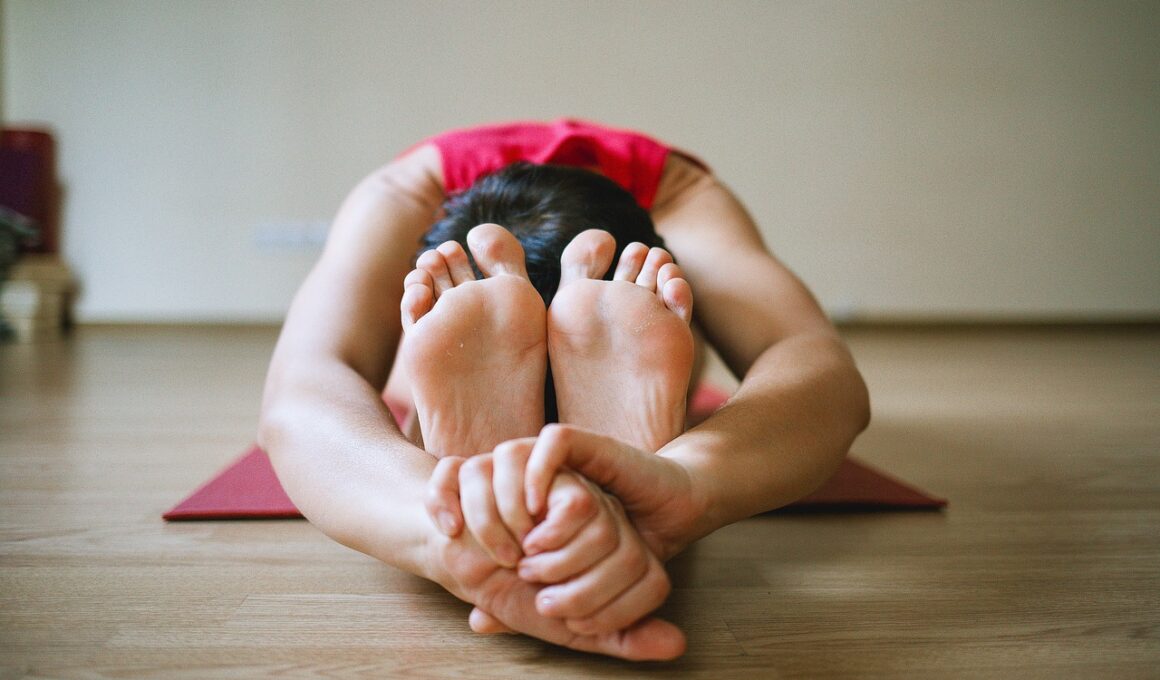Combining Bodybuilding Workout Routines With Flexibility Training
As bodybuilding enthusiasts grow increasingly aware of the importance of flexibility training, integrating these two facets into workout routines becomes critical. Flexibility enhances muscle performance, allowing greater range of motion during heavy lifts. Coupling traditional bodybuilding workouts with dedicated flexibility routines aids in injury prevention and muscle recovery. Joint health is equally paramount; working on flexibility encourages better alignment during exercises. Proper alignment leads to increased muscle engagement, particularly during complex movements like squats and deadlifts. Research indicates that flexibility can vastly improve athletes’ overall strength and aesthetic appeal. Bodybuilders and fitness enthusiasts can achieve remarkable results when strategically choreography bodybuilding sets with flexibility exercises. By warming up with dynamic stretches, muscles prepare to lift more weight and handle rigorous routines more efficiently. Thus, fitness gains manifest as new personal records at the gym and enhanced muscle definition. In conclusion, after observing the mutual benefits of flexibility training alongside bodybuilding workouts, athletes should aggressively pursue a combined approach to foster an holistic fitness journey that encompasses strength, balance, and aesthetics.
The integration of flexibility training into bodybuilding routines presents some exciting opportunities for those serious about their fitness. Incorporating stretches such as yoga or Pilates will assist in preventing injuries while supporting muscle growth. For example, regular practice of leg stretches may improve squat depth and enhance overall leg development. Performing dynamic warm-ups might lead to improved joint mobility, indirectly enhancing workout performance. Focus on areas commonly prone to tension, such as hips, shoulders, and back, allowing bodybuilders to perform complex movements more efficiently and effectively. As these muscle groups loosen, lifters may notice enhanced performance in pressing or pulling movements. Alongside physical benefits, flexibility training boosts mental health by promoting relaxation and reducing stress during intense bodybuilding workouts. More so, flexibility contributes to higher overall workout frequency, as recovery times decrease. Bodybuilders can enjoy more gym sessions without feeling stiff or fatigued. Embracing range-of-motion exercises will undoubtedly pay dividends in muscle gains and confidence. Overall, striking the right balance between bodybuilding and flexibility offers muscle-friendly training that rewards strength with improved mobility, ultimately leading to a more well-rounded physique.
The Role of Dynamic Stretching in Workouts
Dynamic stretching prior to lifting prepares muscles for the stress of heavy weights in bodybuilding workouts. Unlike static stretching that prohibits muscle movement, dynamic stretches involve controlled movements that activate the muscles. They raise body temperature, improve blood flow, and enhance neural activation—critical components for optimal muscle contraction. Incorporating movements such as leg swings, arm circles, and torso twists will ensure that the muscles remain
p>warm and prepared for the intense body sculpting regimen. Additionally, integrating dynamic stretches relevant to the upcoming workout targets specific muscle groups, improving performance. Prioritizing these routines increases the effectiveness of hypertrophy-focused workouts, where controlled muscle overload plays a key role in building size and strength. Moreover, dynamic stretching routines can also act as a transitional space between warm-up activities and lifting. This smooth transition fosters confidence and mental preparedness on race days. Specifically, bodybuilders whose primary goal is peak performance stand to gain from dynamic flexibility sessions. Avoiding injuries is paramount for success, and dynamic flexibility serves as an insurance policy against muscle strains and tears. As bodybuilders practice dynamic stretching regularly, they will likely discover an enhanced level of performance, enabling them to push through more challenging workouts with consistency. Meanwhile, a well-structured routine allows gradual increases in movement quality and output. Adopting these sessions yields dividends not just in strength but in overall mobility and well-being, ultimately leading to a thriving bodybuilding journey.
To maximize benefits derived from combining bodybuilding and flexibility training, it’s essential to establish a structured routine. This routine should alternate between strength and flexibility workouts allowing adequate recovery and muscle growth. For instance, incorporating resistance band stretches or foam rolling post-lifting will encourage muscle recovery and enhance flexibility gains over time. Another approach involves adopting two to three days of dedicated flexibility practice while reserving other days for bodybuilding-focused training. The structured approach allows athletes to monitor progress effectively, setting measurable milestones. Moreover, athletes benefit psychologically from this structured regimen—the mental assurance that both strength and flexibility are being developed mutually can fuel motivation. While bodybuilding promotes muscle hypertrophy, flexibility fosters balance and coordination, contributing to athletic prowess. Follow a checklist that includes routine flexibility training at least two to three times weekly. Enhance every session with post-lift stretches to prevent tightness and encourage blood flow to the muscles. This checklist can be a quality assurance tool that every athlete must embrace. Adopting a structured routine provides a well-rounded approach to training, ensuring that muscle size and strength gains do not hinder flexibility.
Benefits of Improved Flexibility
Among its numerous advantages, improved flexibility can amplify muscle engagement and effectiveness during workouts. As muscle fibers become more elastic, they adapt better to external forces during resistance training. Bodybuilders often find that their performance improves when regularly incorporating flexibility routines into their regimes. Flexibility enhances posture, ensuring that lifters maintain proper form throughout exercises, reducing the risk of injury while lifting. In addition, flexibility minimizes muscle soreness and tightness post-exercise. As blood circulation improves during flexibility training, effective nutrient delivery to muscles fortifies recovery, enabling athletes to return quickly for subsequent workouts. Enhanced muscle recovery time allows for increased training volume—a key factor in developing a more impressive physique. Furthermore, incorporating flexibility techniques teaches body awareness. As awareness increases, athletes can identify imbalances and adjust their workouts. This understanding leads to better performance and reduced injury risk in the long term. Consequently, lifters often report that their muscles feel more resilient and adapted to when challenging routines. Indeed, improved flexibility enhances both the lifting and flexibility experience, creating synergy essential for bodybuilding enthusiasts looking to excel.
Finally, staying committed to finding the right resources and techniques for integrating flexibility into bodybuilding routines will yield lasting results. Athletes might explore various flexibility training styles, from Tai Chi to dynamic yoga, targeting different muscle groups effectively. Accessing high-quality online classes can broaden knowledge of properly performed stretches, ensuring safe and effective practices. Furthermore, working alongside a certified trainer encourages the steady application of joint-safe movements while honing core strength. There is strong synergy between flexibility and strength training, and the paths to achieve success intertwine. With careful attention to detail, monitoring individual progress, and remaining open to learning new techniques in flexibility training, athletes can enjoy long-lasting benefits that go beyond aesthetics and strength. Adapting workout regimens keeps them dynamic while providing the necessary variation. In essence, flexibility training is pivotal for sustained success in bodybuilding routines. When athletes elevate flexibility training alongside their bodybuilding focus, they are rewarded with a combination of greater longevity, diminished injuries, and peaks in performance. Embracing this holistic approach is essential for maximizing body potential in both bodybuilding and overall fitness.
Conclusion: Linking Strength and Flexibility
In conclusion, the fusion of bodybuilding workout routines with flexibility training promises extraordinary benefits for strength and physical health. This merging cultivates a distinct body that balances strength and flexibility, fostering confidence in the gym. As muscle growth thrives through dedicated bodybuilding routines, flexibility training enhances overall performance, ultimately leading to personal success. Athletes become more attuned to their body dynamics, adjusting lifts while maximizing strength while improving mobility. When this balance is achieved, athletes experience a sense of satisfaction fueled by impressive lifts matched with graceful movements. In the pursuit of fitness, exploring the essence of combining strength with flexibility cultivates resilience. Rather than viewing these elements as separate, athletes discover a more gratifying training experience holistically. Both bodybuilding and flexibility contribute to a striving lifestyle, reinforcing effective training methods. Prioritizing flexibility cannot only diminish injury chances but enhance workout effectiveness while nurturing mental well-being. Thus, achieving an optimal balance between strength and flexibility becomes paramount for anyone seeking permanent growth in health and performance levels. A journey filled with strength and adaptability awaits any committed bodybuilder ready to embrace the best of both worlds.


